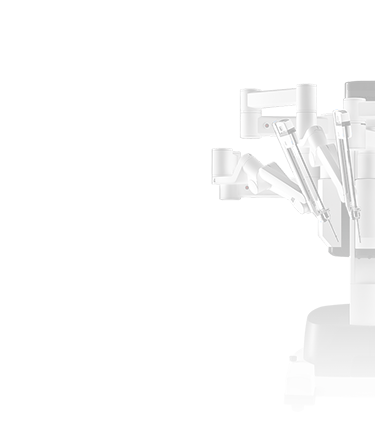PREPARATION FOR THE SURGERY
Patients in the pre-, peri- and post-operative period are under the care of an interdisciplinary team consisting of a surgeon, an anaesthesiologist, a psychooncologist, physiotherapist and dietician as well as other specialty doctors depending on the overall health status. The necessary preparations include assessment of full blood count and blood smear and of kidney function as well as cross-matching.
Particular attention is given assessment made by anaesthesiologists and other specialist of patients with respiratory and respiratory diseases as well as those suffering from congestive heart failure and valvular insufficiency due to the increased risk of complications in their cases.
The anaesthesiologist starts perioperational antithrombotic therapy. Depending on the patient’s overall condition, they may also be assisted by other specialist in order to put in place the optimal pharmacological procedure.
The psychooncologist supports patients with cancers as well as their loved ones during the whole journey through the disease. They may also assist in minimising the adverse mental effects that the patient and his family experience in connection with the disease as well as in building a system of support to the patient, both internal (sense of worth, optimism, creativity and sense of humour) and external (family, significant others, friends and fellow workers). They also provides instruction on how to transform the attitude and thoughts that have a weakening effect on the patient and on reducing techniques, such as visualisations, relaxation or breathing exercises.
The physiotherapist works with the therapy and functional assessment of the pelvic floor and the overall condition of the patient. Physiotherapy used before and after the surgical intervention enables appropriate preparation for the procedure and maintaining its effects. Rehabilitated patients have a faster recovery rate with regard to the sexual function and urinary continence. Appropriate physiotherapy on the day of the procedure prevents complications in the form of pneumonia and venous thrombosis.
Of great importance for the recovery after cancerous diseases or extensive surgical interventions is correctly balanced nutrition. Therefore, the therapeutic team includes a dietician.
THE PROCEDURE
The surgery involves hiatal hernia repair combined with Nissen fundoplication. At the beginning of each procedure, the so-called pneumoperitoneum is produced by filling the abdominal cavity with carbon dioxide in such a way as to obtain a convenient space in which to manipulate the instruments by elevating the abdominal walls from inside and pushing aside the intestines. Then the surgeon makes a few small abdominal incisions in order to introduce the arms of the robot which are equipped with surgical instruments with a small diameter and a camera. Then the operator delicately dissects tissues using the instruments and tries to reach the hernia sac. Incisions are made in such a manner as not to damage other important structures located in the vicinity of the hernia. After completion of the dissection of the sac, if it is of a small size, it can be left without interfering with its structure; if, however, the sac is large, then it may be necessary to resect it and suture the wound. In the next step, the surgeon produces a cuff around the oesophagus from the anterior and posterior stomach walls which they first sutures together. This procedure is intended to strengthen and improve the anti-reflux action of the lower oesophageal sphincter. Furthermore, if there are large defects, the paraesophageal region occasionally requires additional strengthening, such as implantation of a mesh of a plastic material. Additionally, stabilisation of the stomach is also performed during the procedure, which prevents recurrence of hiatal hernia.
BENEFITS FOR PATIENTS
The robotic system is a better tool as compared with the classical or laparoscopic access, for dissecting and removing lymph nodes and providing protection of the autonomic nerves during oncological procedures. Robot-assisted surgery provides urologic oncologists with the possibility of performing minimally invasive, precise and complete procedures with good oncological clearance.
In comparison with procedures performed using the classical or partly laparoscopic methods, the use of a robot enables:
- over two-fold higher likelihood of retaining potency
- lower probability of biochemical recurrence
- fewer number of complications
- reduction of postoperative pain
- reduced blood loss
- better cosmetic effect
- shorter stay at hospital
- faster return to the daily routine and professional life

 +48 785 054 460
+48 785 054 460 









